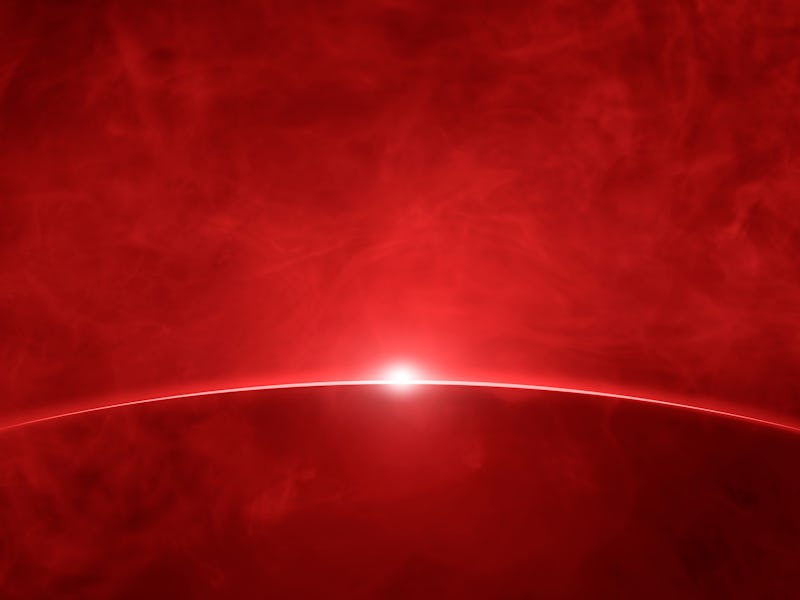Alien friendly? A nearby planet poses a vexing habitability puzzle
New exoplanet just dropped.

Astronomers have discovered a rocky exoplanet that’s only (potentially) friendly to life as we know it part of the time.
The planet, Ross 508 b, dips in and out of its star’s habitable zone (the region around a star where temperatures are just right for liquid water to exist on a planet’s surface) every few days, otherwise swinging too close to its star for comfort.
The National Astronomical Observatory of Japan-led team published its findings in the journal Publication of the Astronomical Society of Japan.
What’s New – Ross 508 b is a rocky world about four times more massive than Earth, and it zips around the red dwarf star Ross 508 once every 11 days. This makes for a breathtakingly short year, but it’s not as close as some other exoplanets’ daredevil orbits.
Because red dwarf stars like Ross 508 are drastically smaller and cooler than our Sun, their habitable zones tend to huddle much closer to the star’s warmth. So even in its close orbit about 5 million miles from its home star, Ross 508 b is just skimming the inner edge of the system’s habitable zone. (Mercury, for comparison, is about 37 million miles from the Sun.)
And the new super-Earth may actually spend a few days at a time in the habitable zone, thanks to its elliptical (oval-shaped) orbit.
The greenish-gray region represents the habitable zone around red dwarf Ross 508. The newly-discovered exoplanet’s orbit skims the inner edge of the habitable zone (solid line), and it may dip into the habitable zone for part of the orbit (dashed line).
Why It Matters — Of course, being in the habitable zone — or even having a whole ocean of liquid water — doesn’t necessarily make a planet habitable. And it turns out that planets well outside the habitable zone, like some icy moons in the outer marches of our Solar System, have liquid oceans hidden beneath their frozen surfaces. But astronomers use the habitable zone as a way to narrow down their search for worlds that might host life.
A planet like Ross 508 b, which seems to spend a few days in the habitable zone — perhaps long enough for water vapor to condense into liquid water, filling low spots in the planet’s still-unmapped topography — could raise some complicated questions and some very intriguing ideas. And it’s not alone; earlier this year, astronomers found another super-Earth called Gliese 514 b, on a similar in-and-out orbit around its own star.
It’s interesting to imagine hardy, adaptable microbes finding a way to ride out the uncomfortably hot close passes of each orbit. Perhaps they could hunker down in insulating cysts while the water around them evaporates; or they could thrive in the shadows of a crater or deep in alien sediment, where temperatures might stay cool enough for water to stick around full-time.
But until astronomers get more data, we won’t know whether Ross 508 b is habitable — for instance, is there liquid water or an atmosphere? — much less inhabited.
Here’s the Background – Tokyo Institute of Technology astronomer Bun’ei Sato and his colleagues discovered Ross 508 b using the Subaru Telescope, one of a cluster of telescopes atop Mauna Kea in Hawai’i. They recently installed a new instrument, called Infrared Doppler (IRD) on the telescope, and Ross 508 b is its first find.
“It has been 14 years since the start of IRD’s development,” said Sato in a statement. “We have continued our development and research with the hope of finding a planet exactly like Ross 508 b.”
The team developed IRD specifically to look for exoplanets, like Ross 508 b, that orbit red dwarf stars. It relies on a planet-hunting method that looks for small deviations in the velocity of a star to infer a planet orbiting it.
Red dwarfs account for about 75 percent of the stars in our galaxy, and the fact that they’re relatively cool, small, and dim makes it easier for astronomers to spot exoplanets. For instance, a planet passing in front of its star will show up more easily on a dim star than a bright star, or a planet tugging on its star will show up more readily if the star is less massive.
Cool and dim stars also show up best in the infrared wavelengths, which is where Subaru and the James Webb Space Telescope, among other observatories, come into play. JWST could even study planets of comparable size and mass as they transit their stars to find out more about this one.
What’s Next — Sato and his colleagues plan to keep searching the skies with Subaru’s new IRD instrument, looking for more exoplanets around nearby red dwarf stars like Ross 508. Other astronomers are already doing the same thing with JWST, and next summer, one group hopes to study the atmospheres of several already-known exoplanets, in order to better understand how often planets around red dwarfs even have atmospheres, what they’re made of, and whether any could support life.
And sometime in the future, a second look at Ross 508 b could shed some light on whether this surprising new world could be habitable — even for a few days at a time.
This article was originally published on